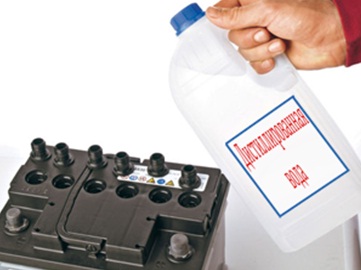You will need
- Distilled water, syringe, glass tube with a diameter of about 5mm, the charger from 0.05-1.5 A.
Instruction
1
First you need to measure the level of the electrolyte. For this you need to Unscrew the tube on the upper surface of the battery (good wide screwdriver), insert a glass tube the size of a ballpoint pen in one of the compartments and plunge it to the bottom. To shield the finger the upper hole of the tube and pull it out, the level of electrolyte in the tube equals the level in the battery (normal 13-15 mm), if higher, then you should suck up the excess electrolyte with a syringe, below – so time to top up distilled water.
2
Suck clean water into the syringe and pour 5-10 ml into each of the six sections of the battery. Thus, to achieve the desired level of electrolyte in the battery.
3
Take a special charger, connect it to the battery without closing the tube. This is necessary if there is too much electrolyte, it will be where to flow out. First 3-4 times to charge and discharge a battery to restore capacity. Then set the current device to charge at 0.1 A and monitor the voltage at the terminals. It is impossible to prevent boiling or overheating of the battery, if necessary, to reduce the charging current. Normal voltage when fully charged should be 13.9-14.5 V. to Further reduce the current to 0.05 A and continue to charge. If in the next 2 hours, the voltage remains the same – to stop to charge!
4
To close the lid. For greater reliability to withstand the battery about 12 hours. Then begin to operate. The battery is ready to go!
Note
During maintenance of the battery can not forget about their own safety. You should strictly observe the elementary rules of precaution. Battery contains sulfuric acid and flammable explosive gas, while working to stay away from open flames.
Useful advice
In the process of operation and maintenance of the battery, its surface is better cleaned with a cloth dampened with ammonia or a solution of water with baking soda. Especially effective it helps when the surface of the battery enters the electrolyte.
